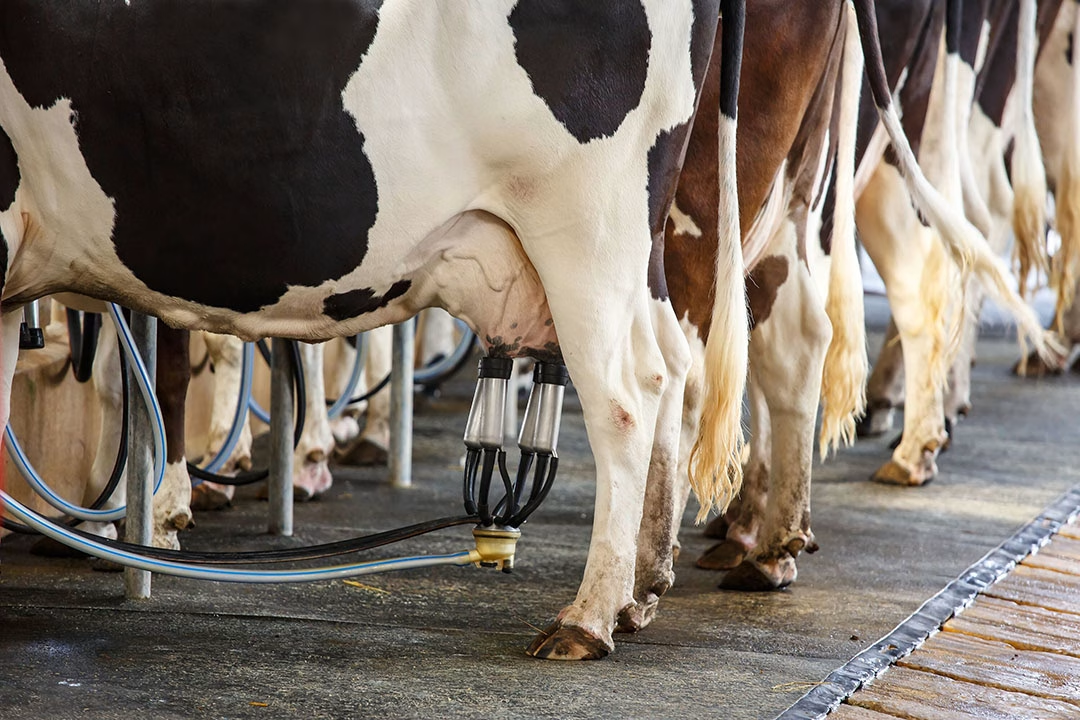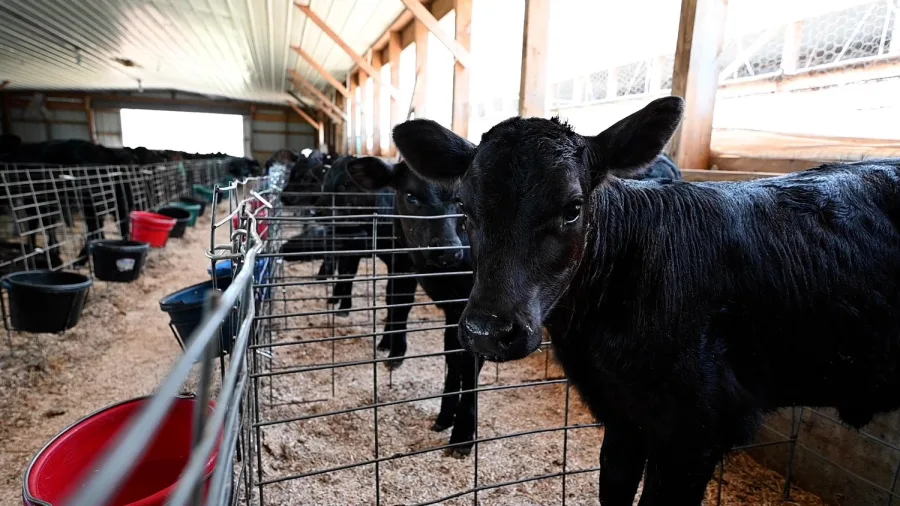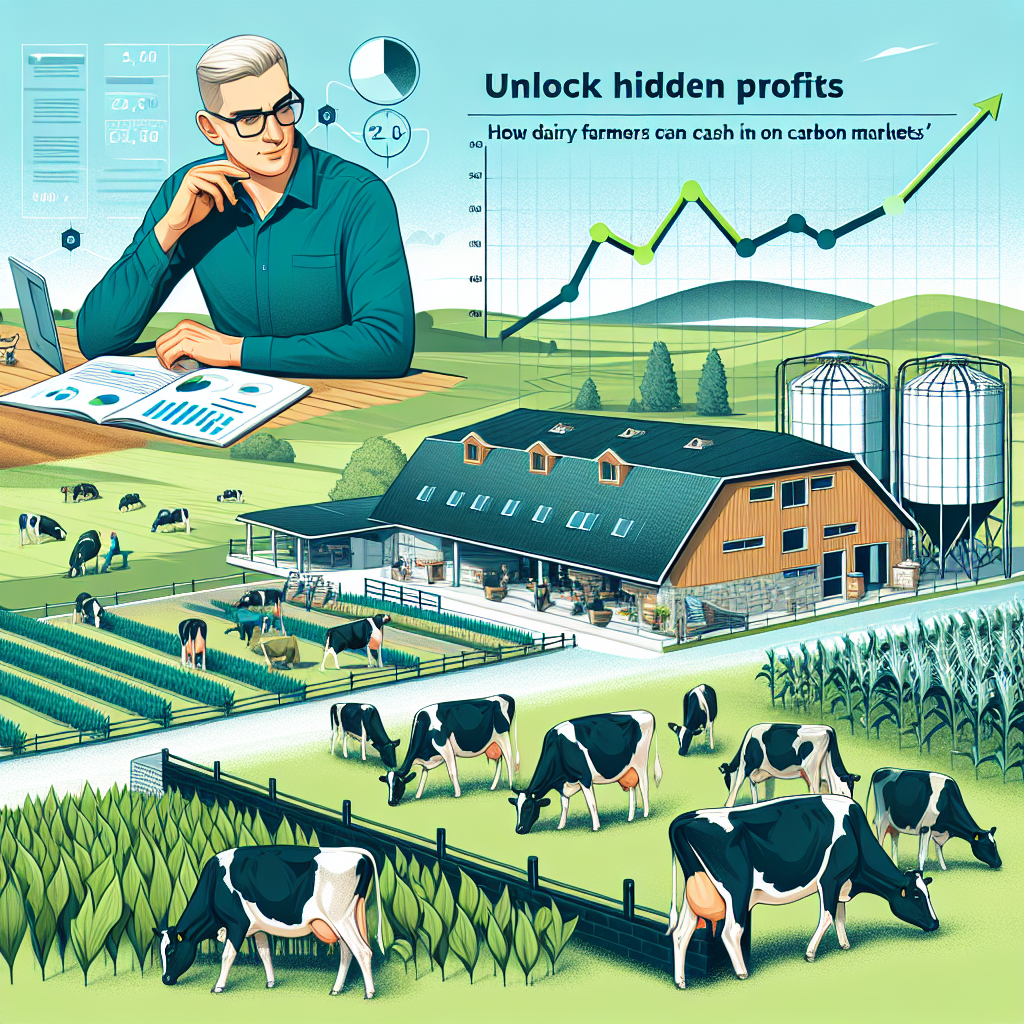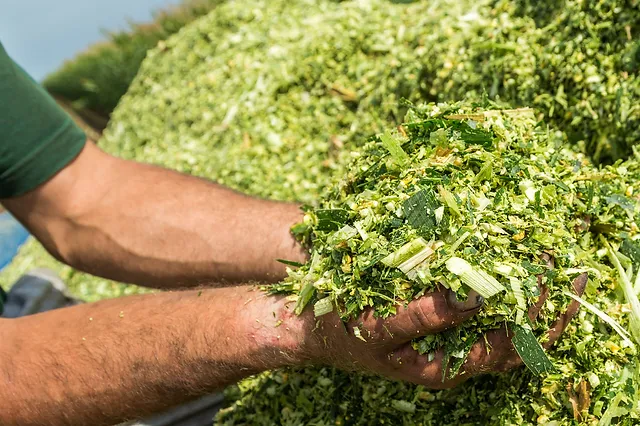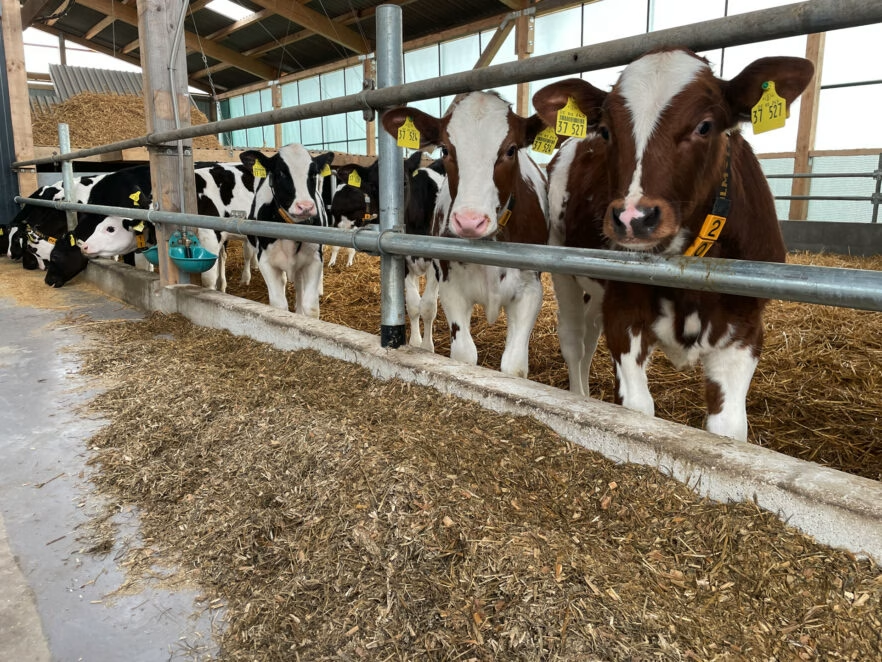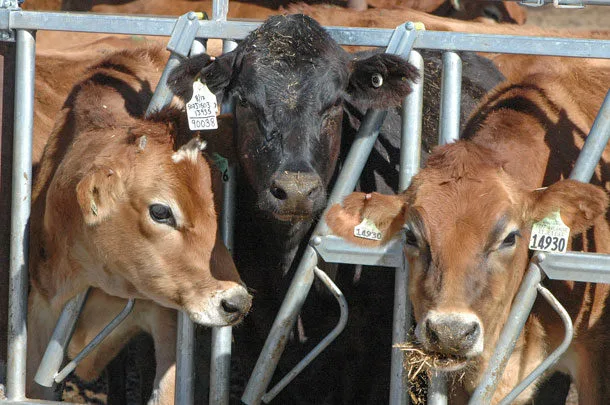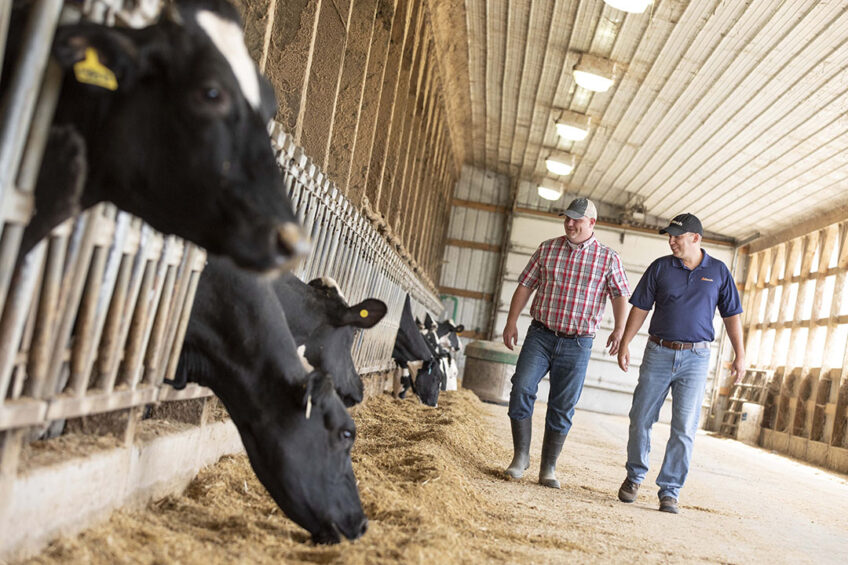Is beef semen boosting your dairy herd’s genetics and profits?
The dairy aisle is getting a shake-up, but it’s not coming from the cartons you see on the shelves; it starts in the herd. Around the world, dairy farmers are tapping into a powerful tool that’s reshaping their herds, and this year’s buzzword? Beef semen. It’s revolutionizing breeding strategies not just for diversification but because it holds the key to an era of calculated genetic enhancement and profitability that few saw coming. This shift marries the science of genomics with strategic breeding decisions, optimizing reproductive efficiency and the market value of hybrid calves. Beef semen use isn’t just a trend; it’s a movement driving a reevaluation of profitable and efficient dairy farming in today’s competitive landscape. The advantages are clear: a breeding portfolio that maximizes returns. “By 2025, we envisage 50% of conventional dairy inseminations switching to beef, transforming herd genetics as we know them,” shared Dairy Industry Report. As we delve deeper into this transformative strategy, explore how beef semen options can unlock doors to increased revenues and showcase the industry’s shift towards purposeful genetic selection.
A Strategic Shift: From Novelty to Necessity in Dairy Farming
Incorporating beef semen in dairy farming is no longer a simple novelty or fleeting experiment. Many dairy producers make it a strategic choice to improve efficiency, profitability, and herd genetics. Historically, the use of beef semen in dairy herds was minimal, often seen as a specialized or situational alternative rather than a primary choice. However, this perspective has shifted dramatically over recent years.
In the early 2000s, the application of beef semen in dairy herds was uncommon and largely experimental. During the past decade, however, this practice has gained significant traction. As of 2022, reports indicate that approximately 60% of dairy producers have introduced beef bulls into their breeding programs—a figure that has doubled since 2000. This marked increase is a testament to its growing acceptance as a viable method for optimizing dairy operations.
Statistics illustrate a compelling rise in the use of beef semen across significant dairy breeds. For instance, in Canada, 39% of Ayrshire, 29% of Holstein, and 25% of Jersey females were inseminated with beef semen by 2023. The rise in these figures indicates the economic and genetic motivations driving this choice.
The shift towards beef semen in dairy herds is primarily driven by its clear economic benefits. The beef market offers higher sale prices for crossbred calves, significantly boosting a producer’s income compared to selling surplus dairy bull calves. This economic incentive and genetic advantages make beef semen a strategic choice for dairy operations, promising increased profitability and improved herd performance.
Furthermore, beef semen bypasses specific challenges associated with dairy genetics, such as lower calving ease and varied birth weights. Bulls like Angus present shortened gestation periods and favorable birth conditions, making them attractive options for dairy operations looking to balance breeding schedules and ensure ease in calving.
In conclusion, the rise of beef semen in dairy herds is underpinned by robust economic benefits and strategic genetic improvements. As the dairy industry continues to evolve, this crossbreeding strategy appears poised to become an integral component of modern dairy management, supporting improved herd performance and increased profitability.
Genomic Innovations and Strategic Breeding: Revolutionizing Dairy Production
Advancements in genomics and the application of sexed semen have significantly reshaped the breeding landscape within the dairy industry. These technological breakthroughs provide a robust foundation for assessing the genetic potential of dairy herds with remarkable precision, enabling more informed and strategic breeding decisions. By leveraging genomics, dairy producers can identify and select high-potential females earlier and more accurately. This precision helps ensure that only the top-tier performers in a herd are bred, thus maximizing future generations’ genetic advancement and productivity.
Sexed semen, in particular, is crucial to this strategy. It increases farmers’ likelihood of birthing female calves, which isvital for future milk production and herd continuation. By predominantly breeding high-performing females with sexed semen, farmers guarantee that their best genetics are passed on, optimizing subsequent generations’ quality and performance.
In this carefully orchestrated breeding ecosystem, beef semen complements genomics and sexed semen by offering a pragmatic solution for managing lower-tier females. When cows do not meet the selection criteria for dairy replacement heifers, beef semen produces calves intended for beef markets, effectively monetizing these animals. This strategy enhances the economic viability of dairy operations and aids in maintaining a leaner, more efficient herd focused on milk production excellence.
Financial Savvy Breeding: Unleashing Cost Efficiency with Beef Semen
- Cost Reduction in Replacement Heifers: Using beef semen significantly reduces the financial burden of purchasing replacement heifers. This approach reduces reliance on external heifer sources, slashing associated costs and health risks. A study by Lactanet highlights that farms utilizing beef semen recorded a 35% reduction in annual replacement costs compared to traditional practices, demonstrating the potential for significant financial savings.Minimized Disease Risk: By decreasing external heifer purchases, farms drastically lower the risk of introducing infectious diseases into the herd. Diseases can devastate a herd financially and health-wise, leading to enormous financial losses. With nearly 60% of dairy farms embracing at least one beef bull by 2022, the dairy industry is reaping benefits from this safer breeding alternative.
- Increased Sale Value of Crossbred Calves: Crossbred calves from beef semen tend to hold better market value. They are often sought after for superior beef quality traits. According to an Agriculture North 2023 report, farms witnessed an average 25% increase in revenue from crossbred calves. These results contribute to enhanced profitability and open new revenue streams.
The swift adoption of beef semen in dairy herds underscores a change driven by economic pragmatism and genetic strategy. It demonstrates the industry’s ability to adapt, harnessing genetics for sustainability and heightened profitability.
Strategic Semen Selection: Balancing Genetics and Economics in Dairy Herds
The decision to utilize dairy or beef semen in a herd is significantly influenced by the age and reproductive history of the cows, namely the number of lactations and inseminations each animal has undergone. Younger cows, typically those experiencing their first lactation, are often inseminated with dairy semen. This strategic choice enhances genetic traits and secures high-quality replacement heifers. As lactation numbers increase, however, the strategic advantage shifts, prompting a rise in the use of beef semen for older or less genetically elite animals.
Economically, this decision hinges on several financial factors. Dairy semen, with its higher cost due to genomic advancements, demands a judicious application to minimize expenses while maximizing returns through improved herd genetics. Conversely, beef semen presents a cost-effective alternative, especially for older cows with a lower likelihood of producing superior progeny. By redirecting investment from high-cost dairy semen, producers can capitalize on the beef market, tapping into additional revenue streams without significant genetic loss.
Thus, optimizing breeding strategies involves a nuanced approach wherein producers assess herd dynamics and market conditions to guide semen choice. Embracing data-driven decisions, informed by genetic evaluations and economic forecasts, allows for the harmonization of dairy and beef production within a single operation. Ultimately, this balanced approach enhances herd profitability and prepares producers to navigate the evolving landscape of dairy farming adeptly.
Choosing Your Champion: Selecting the Perfect Beef Bull for Dairy Herd Success
Choosing the right beef bull for your dairy herd goes beyond simply picking a popular breed; it involves careful consideration of your herd’s objectives and the specific traits that will help you achieve them. Angus bulls remain a favored choice, primarily due to their short gestation period, which averages 279 days when crossed with Holstein cows. They offer attributes like low birth weight, good marbling, and high carcass weight that align with efficient production and marketability objectives. However, the benefits of other breeds should not be overlooked.
For instance, the Limousin breed is noteworthy for its excellence in feed efficiency and the quality of sirloin cuts, making it a viable option for herds aiming to boost carcass grading. Meanwhile, Simmental cattle provide a generous ribeye surface area, typically resulting in smaller calves with an average gestation length of 281 days. Their 84% rate of unassisted births in crossbreeding scenarios also ensures smoother calving operations. Each beef breed presents unique strengths that can be strategically matched with dairy herd goals.
Genetic evaluations and Expected Progeny Differences (EPDs) are equally crucial to breed selection to make data-driven sire decisions. EPDs offer projections of a bull’s progeny’s potential performance relative to others based on specific characteristics like ribeye area. When available, incorporating Enhanced Genomic EPDs (EG-EPDs) further sharpens accuracy, empowering you to make selections that enhance conception rates, calving ease, and birth weight management.
Ultimately, aligning the choice of a beef bull with the objective traits desired for your terminal progeny—be it carcass quality or efficiency—can significantly impact profitability and herd performance. As dairy producers increasingly pivot towards beef crosses to capitalize on a thriving beef-dairy calf market, informed and strategic sire selection becomes an invaluable tool for maximizing gains.
Dairy’s Digital Revolution: Pioneering Tools and Collaborative Innovation
As the dairy sector evolves, so do the tools available to producers, shaping a future where innovation drives decision-making. Among these advancements is the introduction of the “Beef to Milk Search” tool, a groundbreaking collaboration between Lactanet, Angus Genetics Inc (AGI), and the Canadian Angus Association. This tool aims to empower dairy farmers with the capability to utilize sophisticated data for breeding decisions. Producers can precisely refine their selection of beef sires by providing access to the extensive genetic evaluations and Expected Progeny Differences (EPDs) conducted by AGI. These evaluations go beyond the standard, incorporating Enhanced Genomic EPDs (EG-EPDs) to improve accuracy for essential traits such as calving ease and carcass quality.
The role of organizations like Angus Genetics Inc. cannot be overstated. As pioneers in the field, AGI calculates and publishes EPDs for North America and globally, ensuring producers have unparalleled resources. The Canadian Angus Association complements this by contributing vital insights specific to the Canadian dairy context, enhancing these tools’ cultural relevance and applicability. Together, their contributions form the backbone of a data-driven approach to breeding that addresses both the rigors of dairy production and the demands of the beef market.
The “Beef to Milk Search” tool is a testament to this progress, poised to revolutionize how dairy farmers approach sire selection. With its impending release, it promises to streamline the integration of beef traits into dairy herds, ultimately leading to improved economic outcomes. As the industry embraces these innovations, the decision-making processes become more sophisticated and more lucrative, adapting seamlessly to the ever-changing landscape of dairy farming.
The Bottom Line
Integrating beef semen into dairy herds signifies a pivotal shift in the dairy industry, reshaping herd management and enhancing economic sustainability. This strategic incorporation, underpinned by genomic advancements, allows producers to optimize genetic outcomes and improve profitability efficiently. As beef-dairy calves gain market prominence, choosing the right beef bull becomes critical in ensuring success. By harnessing cutting-edge tools like Enhanced Genomic EPDs and collaborative initiatives, dairy farmers can make informed breeding decisions that align with market demands. The future of dairy farming lies in the seamless fusion of beef-dairy genetics, driving innovation and growth. How will you adapt to these transformative shifts in the agricultural landscape to remain competitive?
Key Takeaways:
- The utilization of beef semen in dairy breeding has significantly transformed genetic strategies in the dairy industry.
- Increasing usage of sexed semen optimizes the genetic quality of replacements, while beef semen boosts calf sale value.
- Angus bulls dominate beef inseminations due to favorable traits such as shorter gestation and superior meat quality.
- Diverse beef breeds offer unique strengths, providing opportunities to optimize herd performance and cater to market demands.
- The development of advanced genomic tools enhances breeding decisions, allowing for tailored genetic and economic outcomes.
Summary:
Integrating beef semen into dairy breeding programs has ushered in a transformative era for the dairy industry, challenging conventional breeding practices. Driven by genomics and the rising costs of dairy semen, this strategic choice is more than a decision—it’s a catalyst for enhanced herd performance. Angus beef semen, favored for its advantages in gestation periods and carcass quality, is a popular choice among producers. Collaborations, such as those between Lactanet and genetic organizations, are developing tools that support precision breeding, ensuring that herds align with both performance and economic goals. As beef-dairy calf markets expand, leveraging genetic solutions becomes essential. With the dual forces of genomics and sexed semen, producers can make informed breeding choices that optimize reproductive efficiency and the market value of crossbred calves. By 2025, projections show that 50% of conventional dairy inseminations may convert to beef, revolutionizing herd genetics while yielding economic benefits like higher crossbred calf sale prices. Such advancements are critical as they provide opportunities to maximize genetic progress and reduce the financial burden associated with purchasing replacement heifers.
 Download “The Ultimate Dairy Breeders Guide to Beef on Dairy Integration” Now!
Download “The Ultimate Dairy Breeders Guide to Beef on Dairy Integration” Now!
Are you eager to discover the benefits of integrating beef genetics into your dairy herd? “The Ultimate Dairy Breeders Guide to Beef on Dairy Integration” is your key to enhancing productivity and profitability. This guide is explicitly designed for progressive dairy breeders, from choosing the best beef breeds for dairy integration to advanced genetic selection tips. Get practical management practices to elevate your breeding program. Understand the use of proven beef sires, from selection to offspring performance. Gain actionable insights through expert advice and real-world case studies. Learn about marketing, financial planning, and market assessment to maximize profitability. Dive into the world of beef-on-dairy integration. Leverage the latest genetic tools and technologies to enhance your livestock quality. By the end of this guide, you’ll make informed decisions, boost farm efficiency, and effectively diversify your business. Embark on this journey with us and unlock the full potential of your dairy herd with beef-on-dairy integration. Get Started!








 Join the Revolution!
Join the Revolution!